When we launched our Facebook Opportunity Calculator, we knew two things:
- That Facebook advertising is growing in leaps and bounds (they more than DOUBLED their number of advertisers in the past 18 months).
- That organic reach on Facebook is dwindling.
What we didn’t know is exactly how much running Facebook ads can do for your business page. We dug into the data from our calculator to see what the real relationship between organic Facebook marketing and paid Facebook advertising is. And we were shocked by what we found. Shocked!
What we found is that the Facebook business pages of advertisers (and we’re using this term loosely: you only need a handful of active campaigns to reap the rewards) have dramatically better engagement metrics across the board than those who invest nothing in paid social.
Per our research, Facebook advertisers outperform businesses that aren’t advertising to the average tune of:
- 77% more page fans
- 96% more page clicks
- 126% more page impressions
- 225% more post impressions
- 90% more fans reached
- 111% more friends of page fans reached
Let’s dig into the data in a little more detail.
Chart #1: Running Ads Increases Facebook Page Fans By 77%
Advertisers on Facebook tend to see a massive increase in page fans.
Users with active ad campaigns saw their number of Facebook fans increase by an average of 77%, from 107 to 190.
Fans are apparatuses with rotating blades that create a current of air. We aren’t talking about those fans.
Fans are also the metric by which popularity is judged. The New England Patriots have fans. I have fans. At one point, even Nickelback had fans. We aren’t talking about those fans today, either.
We’re talking about fans of your Facebook page.
What are Facebook Page Fans?
In short, fans are the people who have liked (and follow) your Facebook page. By default, users who like your page also follow your page (meaning they are eligible to see your posts based on myriad factors including time and previous engagement with your content).
There’s also another kind of users, though, a hyper-valuable subset of your audience called “See First Followers.”
See First Followers are those who have actively chosen to prioritize what you share. These are the people who adore your content, the ones who engage with your posts, boosted or otherwise.
These folks are your bread and butter, current and future brand evangelists. In fact, Facebook takes the “See First” designation so seriously that it overrides Edgerank (Facebook’s feed-management algorithm). This allows your content to take precedent over what other businesses (including your competitors), organizations, even your followers’ friends post.
It goes without saying that you want as many page fans as possible. Here’s where being an advertiser comes in.
Why should you care?
Because by running a handful of ads you can almost double your organic reach!
The boost in Facebook Page Fans you receive by running paid ads is akin to the gift card you receive when you drop a chunk of loot at an Applebee’s during the holiday season. You know, if that gift card was interactive, could make you money, and knew other gift cards that’d like to make your acquaintance as well.
It gets even better…
If you run Facebook ads and your total number of page fans increases, the size and quality of your lookalike audiences improve, too. Your ads are served to more qualified prospects even if you don’t increase your spend.
Sold.
Chart #2: Running Ads Increases Facebook Page Clicks by 96%
You read that right: users with active Facebook ad campaigns saw an average increase in page clicks of 96%!
Now, the relationship between paid and organic here is obvious: if more people are visiting your page (see benefit number one) when you advertise, it makes sense that clicks increase, too. And while Page Clicks are nowhere near as valuable as, say, a conversion, they are an indicator of engagement.
Facebook fans are great.
But if your legion of page-likers isn’t engaging with your content (organic or paid) after the initial follow, their usefulness to your business begins and ends with their ability to form new lookalike audiences.
So how do we measure engagement? One way is with the Page clicks metric (for help with identifying metrics, check out our post on Facebook Insights.
What are Facebook Page Clicks?
Facebook page clicks refer to the number of times people clicked on any of your content outside of more nuanced, format-specific metrics like link clicks and video plays. If your content incites a user to take some “other action” on your page, like clicking a person’s name or the like counter or time, that’s a page click.
Clicks are a way for businesses to measure engagement in a broad sense.
If a post encourages a page visitor to click anywhere else on your page, your content may not have done the job, but it did a job. Page clicks are an easy way to see how your posts perform without digging into overly complicated insights that probably mean nothing to the average advertiser.
Why should you care?
Because knowing that your organic Facebook posts are inciting activity of any kind is indicative of an engaged audience.
It can be easy to see low engagement metrics in more obvious categories (video plays, for example) and think your content is underperforming or, worse yet, going unnoticed. Page clicks gives you an aggregate of “other” actions taken by your fans that can provide insight into the types of content that work best with your audience.
If your image-centric posts incite more page clicks than your videos, post more images. Simple.
You can extrapolate further and leverage Page Click data from organic Facebook posts to influence your ad creative.
Chart #3: Running Ads Increases Facebook Page Impressions by 126%
On average, Facebook users with active ad campaigns see a 126% increase in page impressions.
While that number just sounds impressive, when you look at how that 126% increase in impressions works it verges on mind-meltingly neat.
Here’s where, semantically, things get tricky.
What are Facebook Page Impressions?
They’re called “page impressions” but it’s better to think of them as “content impressions.” That’s because page impressions refer to the total number of impressions seen of any content associated with your page.
Per Facebook, “Impressions are the number of times a post from your Page is displayed. People may see multiple impressions of the same post. For example, if someone sees a Page update in News Feed and then sees that same update when a friend shares it that would count as two impressions.”
Page Impressions can be confusing because they’re not indicative of the number of fans your page has but rather, the number of times those specific individuals have been exposed to your content.
So why are they valuable, you ask?
Because more page impressions mean a) people are seeing your posts and b) they’re seeing them often. They’re becoming familiar with your brand and beginning to perceive your value.
Why should you care?
If you have higher-than-average page impressions, it could mean a handful of things:
- Your fans share the hell out of your content
- You’re got a ton of “See First Followers”
- You’re boosting your posts
Now, in the event you have a relatively small number of fans but a ton of impressions, you likely fall into the second group: you’ve got an active audience. This is great for you, and for your paid efforts, because if people actively seek your free content, there’s a good chance they’ll gobble up what you’re paying to put in front of them, too.
Conversely, if your audience is large but page impressions aren’t particularly high, this could mean that your content simply doesn’t resonate with your followers. If this is the case, rethink your strategy and develop a new strategy for your Facebook offerings (both paid and organic).
Chart #4: Running Ads Increases Facebook Post Impressions by 225%
That’s right, people. A TWO HUNDRED AND TWENTY FIVE PERCENT INCREASE.
Using the averages in the graph above, we can see that, while the average user who isn’t running Facebook ads has about 922 post impressions, those who have some semblance of a paid presence on Facebook see their post impressions leap to more than 3,000.
Knowing how many people see the content you post on Facebook matters. When it comes to measuring results from your paid efforts this is obvious, right? If you’re directly investing hard-earned greenbacks into campaigns (no matter the size and scope), understanding how many people are seeing those ads is a foundational component of your optimization efforts.
The same holds true for your organic Facebook posts: measuring their reach is key.
If you’re unsure of how many people are seeing your organic posts, and how those people interact with said posts, and if they derive value from said posts, why post in the first place?
What are Facebook Post Impressions?
Simply put: the number of people who saw any of your Facebook page posts.
Post Impressions is a valuable reach metric. It gives you an idea as to the number of individuals who have seen what you posted.
If your post appears as an update in a user’s news feed and then they see it again shared by a friend, that’s still just a single post impression (whereas it would count as two page impressions).
Notice that I said “people” and not “fans.” This is an important distinction (more on that in a minute).
While fan-centric data is valuable, understanding how all people, including the ones who don’t know your business, engage with a piece of content, can provide insight as to how to optimize future organic (and paid) content on Facebook.
Why should you care?
Right out the gate, let’s be real with one another for a second: Who doesn’t want a 225% increase in any metric (outside of cost)?
As I mentioned before, Post impressions are a reach metric; they allow you to understand how many induvial, fan or otherwise, are seeing your organic posts. When it comes to your existing fans, this is helpful .But it’s with those additional viewers that you’ll glean real value.
When non-fan users see and engage with your posts, you’re ostensibly using your organic content on Facebook to function like the Google Display Network. You’re building brand awareness and providing value to potential prospects at no cost to you.
Free clout with your future customers ain’t a bad thing, people.
Chart #5: Running Ads Increases Unique Facebook Fans Reached by 90%
We just focused on overall reach, how your organic posts on Facebook are seen by more individuals when you advertise on the channel, too. Now we’re going to focus explicitly on the subset of people your organic content reaches who are already fans of your business page.
Simply advertising on Facebook will give your organic posts a 90% increase in unique fans reached, even if you don’t boost them after posting.
The only thing better than an engaged fan is a boatload of engaged fans you didn’t have to pay for.
What are Unique Facebook Fans?
Drumroll please….
Unique Facebook fans are, well, individual fans of your page who are exposed to a given piece of content.
These are your people, the ones who see and share everything you post, from cat memes to product demos.
Kindly direct your attention to the actual and maximum free audience components in the image below:
As you can see, there’s a massive disparity between the two and, per Facebook, boosting your posts is the only way to close the gap, right?
Wrong.
Why should you care?
Because the data we’ve gathered clearly indicates that, by advertising on Facebook, you can close the gap between your actual audience and your maximum free audience, without spending money to boost your posts.
***
In the same way that advertising across multiple networks improves performance, Facebook advertisers see a lift in organic performance when compared to businesses that don’t advertise.
If you actively post on your business’s Facebook page and aren’t advertising, you’re shooting yourself in the foot. By running just one simple campaign, you stand to enhance key organic metrics by upwards of 100%.
On the other side of that coin, if you’re currently advertising on Facebook but do little or no posting outside of what you’re already paying for, you’re losing out on significant brand-building opportunities and, more importantly, new, qualified Facebook users to whom you can advertise.
If Zuck and co. are willing to give a little extra ju ju to those folks who pay (even just a little) to play (including but by no means limited to your direct competition), your business can’t afford to miss out!
A note on the data
We based our findings on the analysis of 6,439 unique Facebook pages. Some were advertisers, some simply had active pages but no discernable paid presence. Now, perhaps the most important caveat here is how we chose to define “advertiser.” An advertiser is someone with at least one active campaign within the last 90 days. Most of the Facebook accounts we analyzed and labeled “advertisers” had fewer than 5 active ad campaigns.
With Facebook, thanks to the relationship between organic and paid performance, to reap the overwhelmingly positive benefits all you need to do is get started.
You don’t even have to be a successful advertiser (though it certainly helps): you just need to be running Facebook ads and the boost to your organic reach metrics will materialize.
Your business’s reachable audience on Facebook is drastically impacted by advertising: it amplifies the hell out of your content, improving reach. But while the caps for “Actual Audience” and “Maximum Free Audience” in the example above are exponentially lower than the “Paid Audience Potential” (611; 28,975; 1,920,000 respectively), there’s still a ton of value on the organic side of things.
Ready to dive in? Check out our new infographic: How to Advertise on Facebook in 10 Steps.

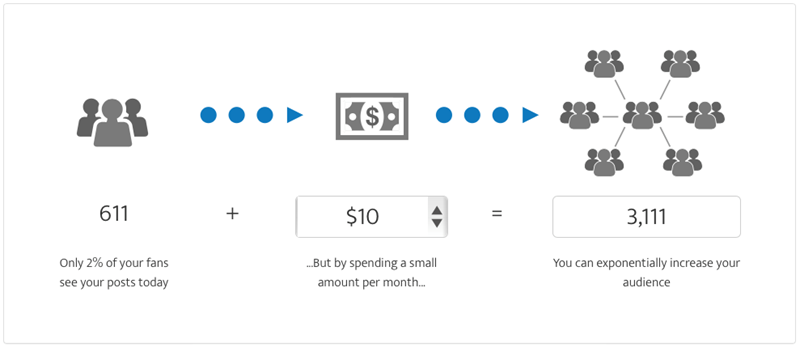
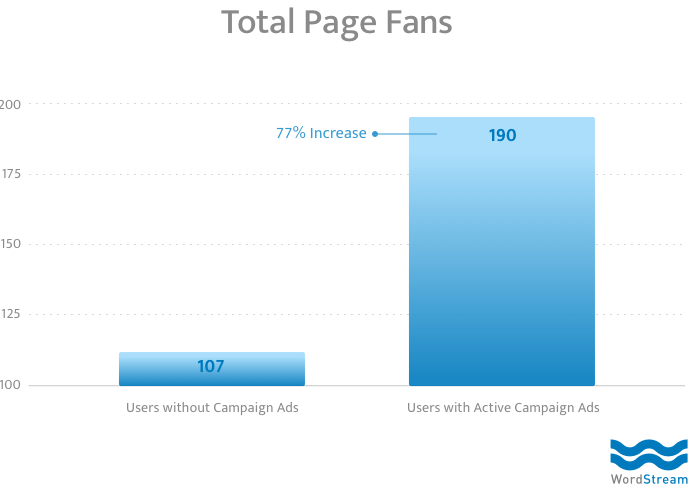
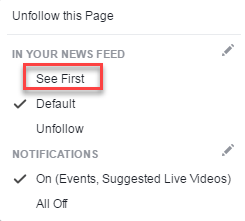
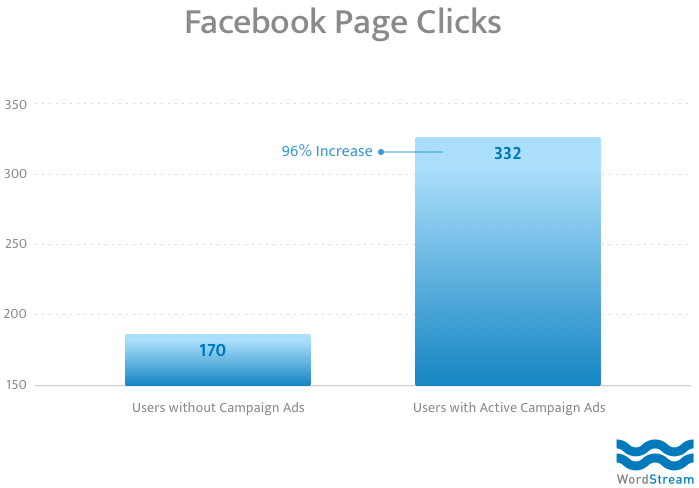
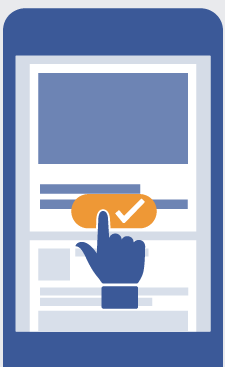
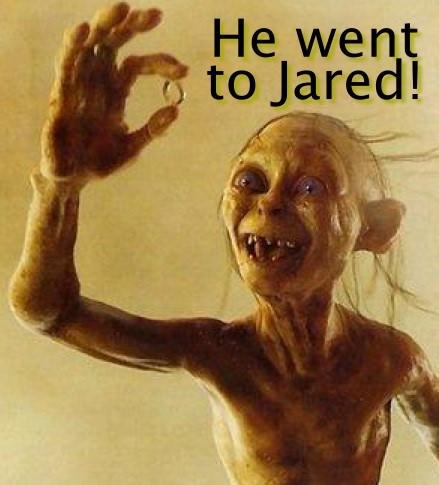
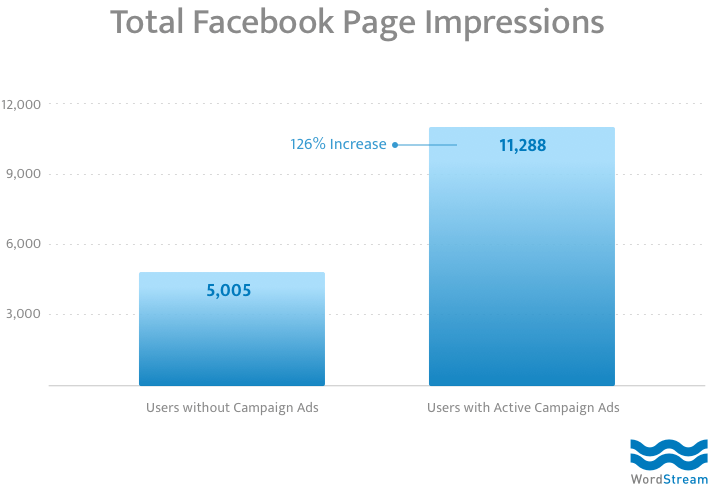
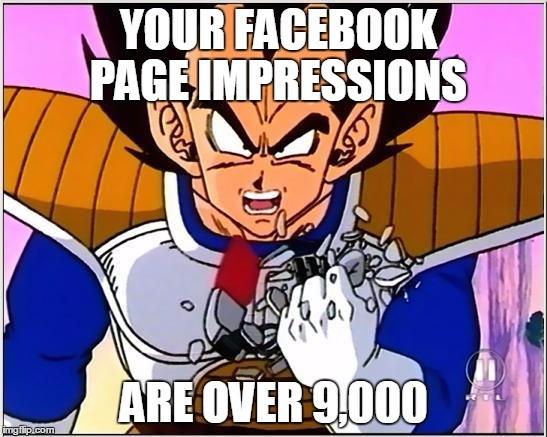
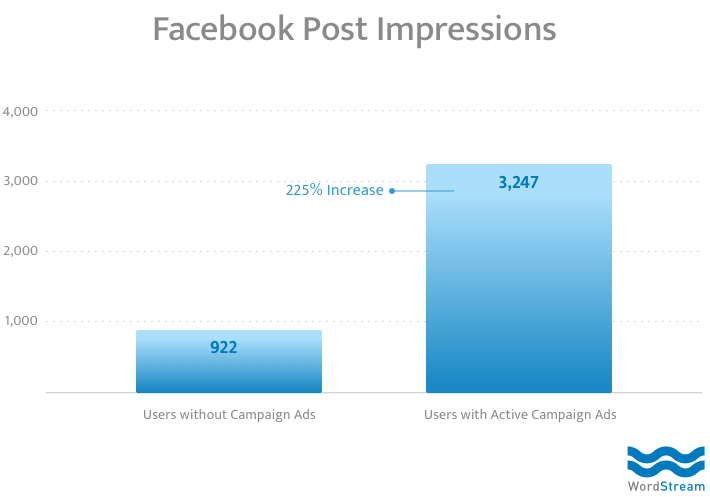
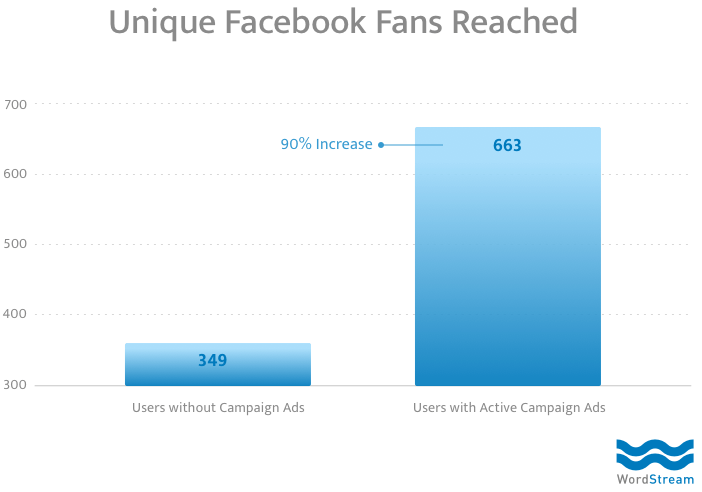
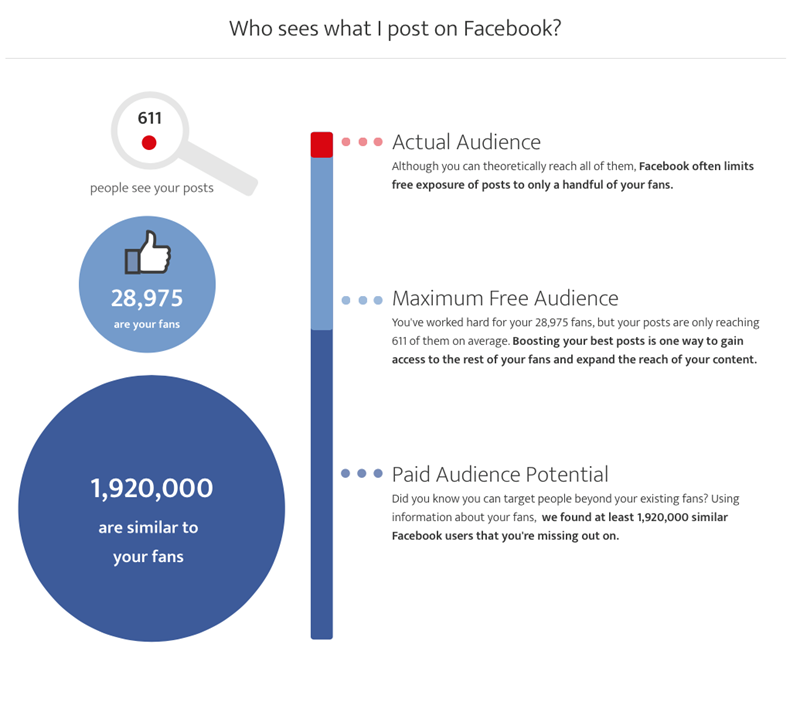

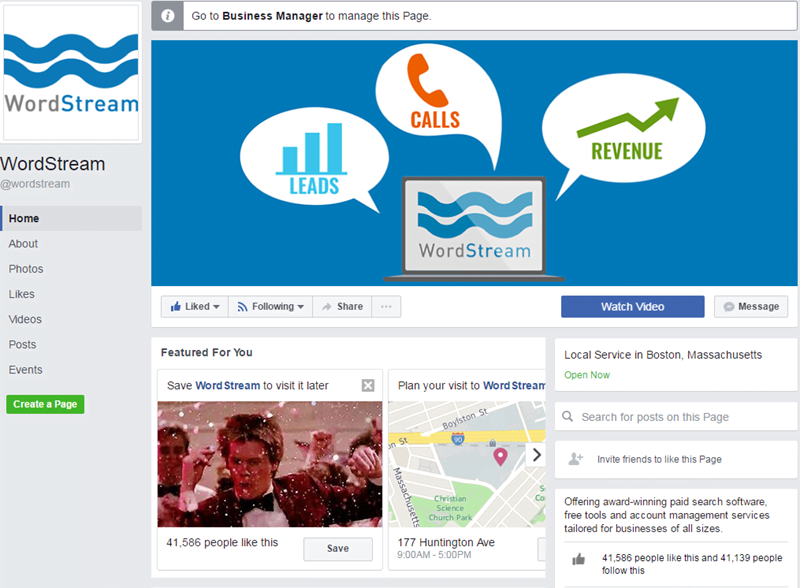


0 Comments